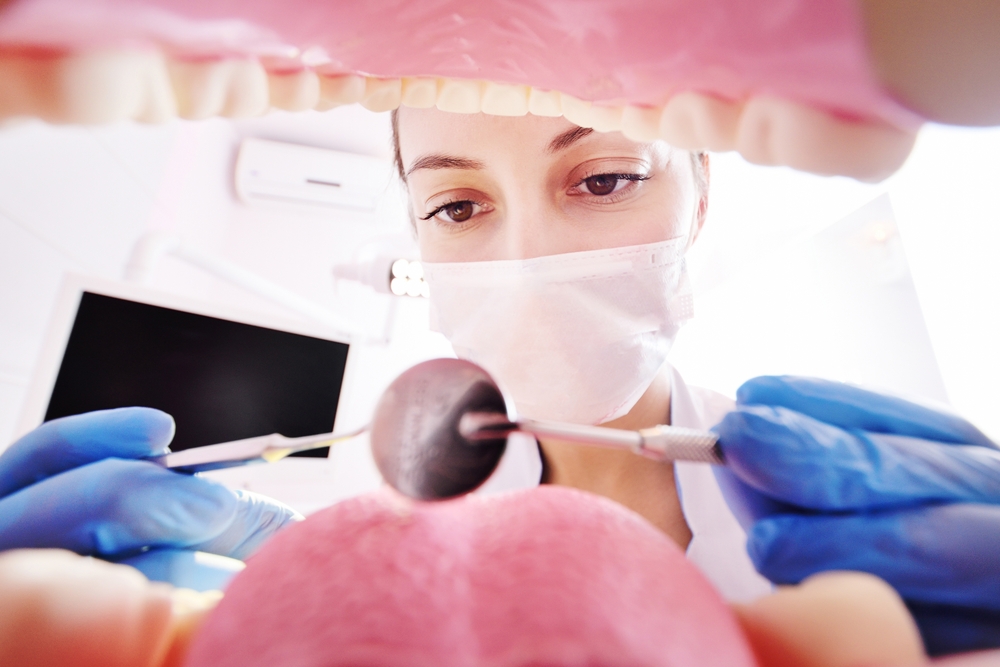While most people correctly assume that “dental health” includes their gums and teeth, there’s one more important player in the realm of oral hygiene: your tongue. Your tongue isn’t just a handy tool for savoring the taste of your favorite foods; it’s actually one of the most revealing indicators of your oral health. So next time you’re in front of the bathroom mirror, don’t forget to open your mouth and say, “ahhh!” Here’s what your tongue might be trying to tell you:
What Color Is Your Tongue?
A healthy tongue is generally pink and covered with small nodules known as papillae. However, you may not be seeing pink when you look in the mirror! Here are a few common colors your tongue might turn:
- White: A white-coated tongue may indicate dehydration or poor oral hygiene. It could also indicate oral thrush, a fungal infection caused by Candida yeast overgrowth. While oral thrush can affect anyone, it’s more common in infants, the elderly, and individuals with weakened immune systems.
- Bright Red: A bright red, strawberry-like tongue can be a sign of vitamin deficiency, particularly B12 or folic acid. In some cases, a red tongue could also indicate a harmless condition called geographic tongue, where patches on the tongue’s surface are missing papillae (the small bumps that contain your taste buds).
- Black or Dark Brown: A black or very dark-colored tongue doesn’t mean your mouth is having a mall goth phase. Rather, this issue is often caused by an overgrowth of bacteria or yeast, which can be triggered by poor oral hygiene, smoking, or certain medications. However, if the problem persists for longer than a few days or weeks, something more serious may be at play. Consult your doctor or dentist for advice.
- Blue or Purple: A blue or purple tongue can be a sign of a condition that restricts oxygen supply, such as heart disease or respiratory disorders. It’s important to seek immediate medical attention if your tongue turns blue or purple.
Beyond health conditions, the color of your tongue can also change depending on various external factors (food and drink consumption, smoking, and certain medications, just to name a few). It helps to communicate with your medical and dental healthcare providers about these factors so we can get to the bottom of why your tongue may be turning a rainbow of colors!
Is Your Tongue Dry?
If your tongue always feels dry, you may not be producing enough saliva. Saliva plays an essential role in maintaining oral health. It helps clean the mouth and manage the levels of bacteria and fungi. Dry mouth (xerostomia) is a condition where your saliva production is reduced and can create an environment that allows harmful organisms to thrive, potentially leading to fungal infections such as oral thrush.
Are Things Getting… Hairy?
A “hairy” tongue might sound disturbing, but it’s usually harmless and often a result of poor oral hygiene. It occurs when the papillae on your tongue grow longer than usual, trapping bacteria or yeast and causing a hairy or furry appearance. Regular brushing of your teeth and tongue, flossing, and the use of a tongue scraper can help keep your tongue healthy and prevent oral health problems.
Are You Seeing Spots?
Along with dry mouth and a white tongue, oral thrush can also manifest as creamy white or yellow lesions (spots) on the tongue or inner cheeks. Other symptoms include a loss of taste and a “cottony” feeling in the mouth. If you encounter this problem, consult a friendly dentist local to Bordentown, NJ, at Hamilton Dental Associates for assistance.
Do You Have Tongue Bumps?
Occasionally, you might notice bumps on your tongue. Some bumps result from trauma like biting your tongue or burning it on a hot beverage and will heal on their own.
If you have several small, painful bumps that are white or yellow with a red border, you may have canker sores, also called aphthous ulcers. The exact cause of canker sores is unclear, but they can be triggered by stress, injury from a dental appliance, or even a vitamin deficiency. While canker sores can be uncomfortable, they’re usually harmless and heal within one to two weeks.
In some cases, a herpes infection can also cause bumps on the tongue. Herpes infections are caused by the herpes simplex virus (HSV), and there are two main types: HSV-1 and HSV-2. While HSV-1 is commonly associated with oral herpes, including cold sores, it can also cause sores or lesions on the tongue. Preventive measures, such as avoiding close contact during outbreaks and practicing good hygiene, can help reduce the risk of transmission. If you have concerns about oral herpes or experience symptoms such as cold sores, it is advisable to consult with a healthcare professional for proper diagnosis and guidance on managing the condition.
Regardless of what the cause of your tongue bumps may be, if the bumps persist, grow, or are painful, it’s time to seek medical attention. You may be dealing with a viral infection, scarlet fever, or even oral cancer. If your problem is beyond the realm of dental health, our team may recommend seeing an ear, nose, and throat specialist (ENT) or other medical professional to clear things up.
Don’t Get Tongue-Tied About Your Health!
Looking in the mirror and sticking out your tongue can reveal a lot about your dental and overall health. Paying close attention to changes in its appearance, texture, or sensation can help detect potential health issues early, from oral cancer to fungal infections. In addition, maintaining good oral hygiene, staying well-hydrated, and regular dental check-ups can significantly contribute to a healthy tongue and mouth.
Hamilton Dental Associates is proud to provide comprehensive pediatric dentistry services to Robbinsville, Hamilton Township, and the surrounding areas, as well as dental and orthodontic care for adults. If you have concerns about your tongue or other aspects of your dental health, or it’s simply been a while since your last check-up, don’t hesitate to book an appointment today. We’re looking forward to seeing your smile!







